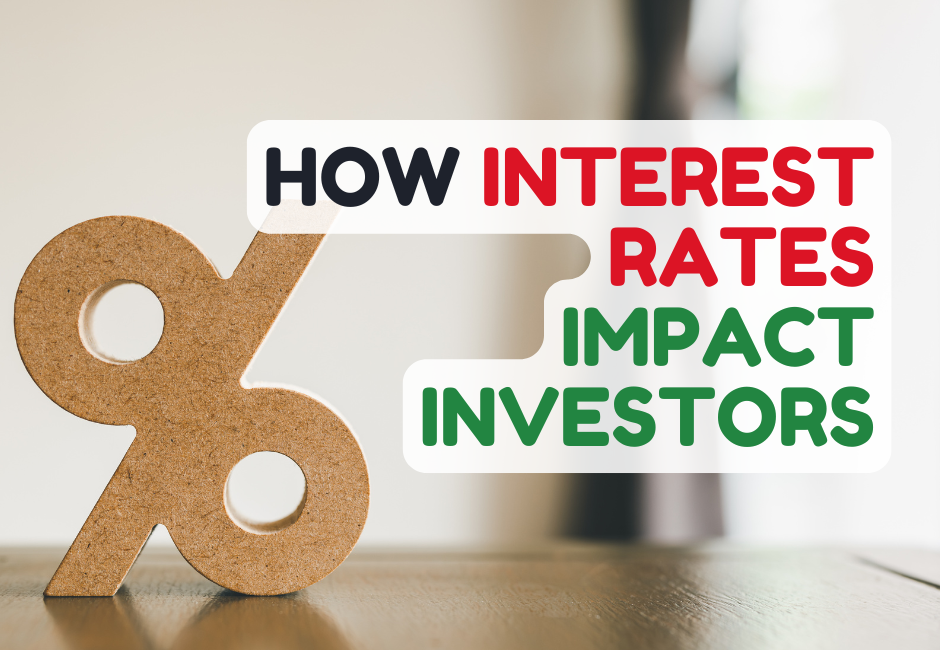
How Home Loan Interest Rates Affect Property Investors: A Data-Driven Analysis
Introduction
Home loan interest rates play a powerful role in shaping the success of property investment strategies. Whether rates are rising or falling, they impact borrowing power, cash flow, portfolio growth, and overall profitability. For investors, understanding how rate movements affect property values, rental yields, and financing options is critical to making smart, profitable decisions.
Interest rate changes can mean the difference between an investment that performs smoothly and one that leads to cash flow strain or portfolio stagnation. With a data-driven approach, investors can better anticipate market shifts, adjust financing strategies, and position their portfolios to maximise returns—even in volatile conditions.
This article explores how interest rates affect borrowing power and cash flow, reviews historical patterns, offers insights into when to fix or float rates, and highlights the best tools for tracking rate changes—all through the lens of an informed property investor.
How Interest Rates Shape Borrowing Power and Cash Flow
Borrowing Power and Loan Serviceability
Lenders assess borrowing power based on income, expenses, and the applicable interest rate. As rates rise, monthly repayments increase, reducing how much an investor can borrow. Lenders also apply a serviceability buffer—usually 2–3% above the current rate—to ensure borrowers can manage future increases.
Example:
- At 3% interest → eligible borrowing: $800,000
- At 5% interest → eligible borrowing drops to ~$640,000
A seemingly small 2% rate increase can slash borrowing power by around 20%. This has major implications for investors aiming to grow their portfolios, often forcing a rethink of property type, price point, or location.
Cash Flow Impact
Higher interest rates also directly affect cash flow. For leveraged investors, small rate increases can erode profitability or even push a property from positively geared to negatively geared.
Example on a $500,000 interest-only loan:
- 3% interest → $1,250/month
- 5% interest → $2,083/month
- 7% interest → $2,916/month
That’s a $10,000 to $20,000 annual difference just from rate movements. Without matching increases in rental income, investors may face tighter margins, reduced reinvestment ability, or the risk of forced sales.
Highly leveraged investors are particularly exposed, as rising rates multiply costs across every property in the portfolio.
Historical Trends: Interest Rates and Property Market Cycles
Low-Interest Rate Environments
When rates are low, borrowing is cheaper and demand surges. Investors borrow more, expand portfolios, and often drive rapid price growth.
Case in point:
Between 2020 and early 2022, ultra-low rates fueled price booms across capital cities and regional hubs. Investors leveraging cheap debt saw significant capital gains, especially in high-demand, undersupplied markets.
Low-rate environment characteristics:
- Strong price growth
- Higher investor leverage
- Competitive refinancing and equity access
High-Interest Rate Environments
Rising rates increase borrowing costs, dampening buyer demand and slowing price growth. Investors may face reduced affordability, cash flow pressure, and in some cases, forced asset sales.
Case in point:
From mid-2022 to 2023, sharp rate hikes led to price corrections in several regions. Markets with resilient fundamentals (jobs, infrastructure, population growth) held up better, but highly leveraged investors were squeezed.
High-rate environment characteristics:
- Softer price growth or corrections
- Increased rental demand as buyers sit out
- Slower investor activity and more focus on cash flow resilience
Savvy investors often use these cycles to secure quality properties at discounts, positioning for recovery as rates later stabilise.
Data-Backed Insights: When to Fix or Float Your Rate
When to Fix Your Rate
Fixed loans suit investors when:
- Rates are forecast to rise sharply.
- Cash flow certainty is a priority.
- The fixed rate is competitive with variable options.
Fixed rates deliver predictability but come with trade-offs like break fees if you refinance or sell early.
When to Choose a Variable Rate
Variable loans are attractive when:
- Rates are expected to stabilise or fall.
- You want flexibility (e.g., extra repayments, refinance options).
- The fixed rate premium is too high relative to expected savings.
A popular middle-ground is a split loan, blending fixed and variable portions to balance certainty and flexibility.
Tools to Track and Navigate Rate Fluctuations
Central Bank Announcements and Economic Reports
- Reserve Bank cash rate decisions
- Inflation and wage growth data
- GDP and economic growth updates
These offer early clues on likely rate direction.
Bank and Lender Comparison Platforms
- Mortgage comparison sites for updated rate offers
- Lender forecasts and commentary
Regularly checking these can help you spot savings opportunities or better structuring options.
Calculators for Repayments and Borrowing Power
- Repayment calculators: Gauge how rate changes affect monthly outflows.
- Borrowing power calculators: See how much you can borrow under different rate scenarios.
Property Market Data Tools
- Median price trackers
- Rental yield and vacancy rate monitors
- Stock on market and days on market reports
These help investors balance financing strategy with market fundamentals.
Why Interest Rates Matter So Much to Investors
Rates don’t just change your mortgage bill—they shape the entire investment strategy. They affect:
- How much you can borrow.
- Which markets are viable.
- What cash flow you need to stay resilient.
- When to buy, refinance, or restructure.
By paying attention to rate movements and understanding their ripple effects, investors can avoid overleveraging, protect cash flow, and seize opportunities in both hot and cooling markets.
Final Takeaways for Investors
- Understand rate impacts: Know how even small changes influence borrowing power and repayments.
- Monitor cycles: Use historical insights to position your portfolio ahead of the curve.
- Adapt your strategy: Lock in fixed rates when appropriate, go variable when market conditions allow, or split for balance.
- Leverage tools: Use calculators, lender comparisons, and property data to make informed decisions.
By staying proactive and data-driven, property investors can navigate interest rate fluctuations with confidence, ensuring their portfolio remains profitable no matter where the economic cycle heads.




